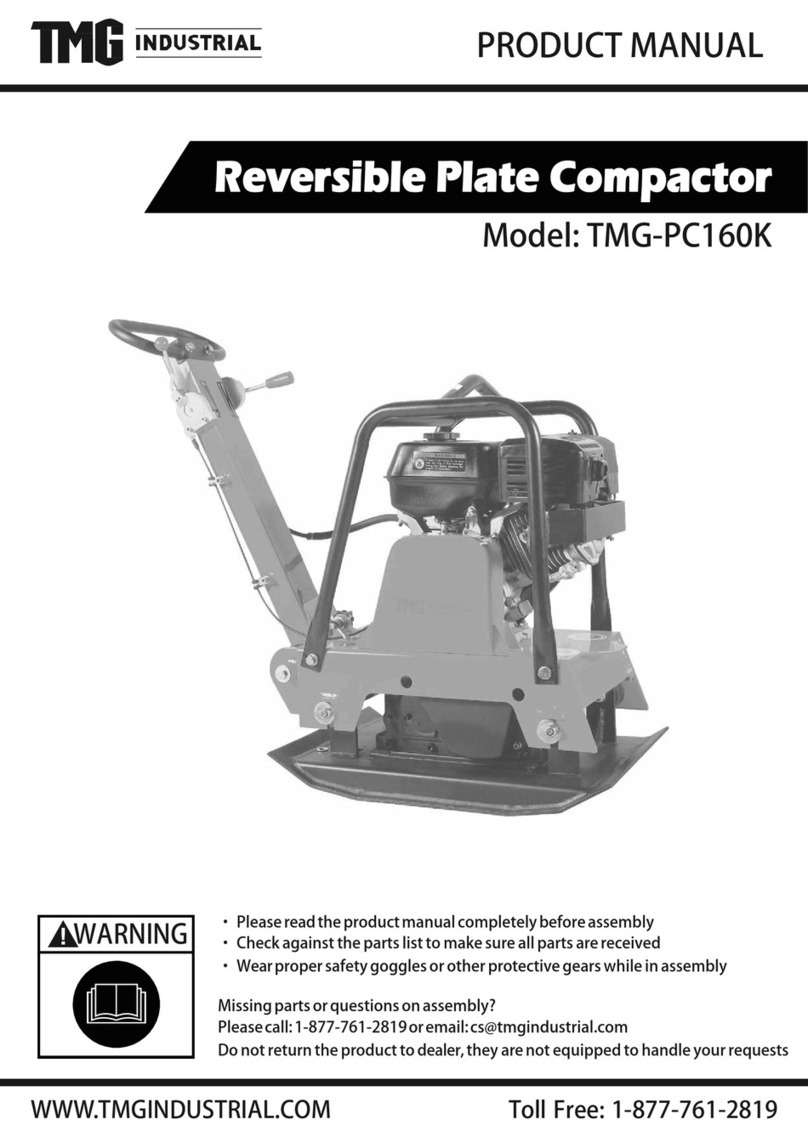FOREWARD
◇For your own safety and protection from bodily injuries, carefully read,
understand and follow the safety instructions in this manual.
◇Please operate and maintain your machine in accordance with the
instructions in this manual.
◇Defective machine parts are to be replaced as soon as possible.
◇Keep this owner's manual handy, so you can refer to it at any time.
◇No part of this publication may be reproduced without written
permission.
◇We expressly reserve the right to technical modifications- even without
express due notice - which aim at improving our machines or their safety
standards.
FEATURE
TRE-75 Tamping Rammer adopts the HONDA 4-cycles engine that
there is one air cleaner. The guide handle offers a highly engineered,
built-in shock mount system to reduce HAV (hand-arm vibration) and
improve operator comfort. Well balanced performance reduces operator
effort, non key seat design double service life of inner-cylinder body.
Easy for dismounting, and low cost for maintenance.
TRE-75 Series Rammer are ideally suited for the compaction of
granular, detritus, mixed and cohesive soils in confined areas, as well as
apply to asphaltum detritus, concrete and clunch. This model provides
reliable, comfortable use for a variety of applications such as
compacting sandy oil, back fill, asphaltum, road, railroad, bridge,
reservoir, dyke, courtyard, flooring and so on.
SPECIFICATIONS
Weight: 70Kg
Hit frequency: 420-650/min
Compacting force: 14000N



























